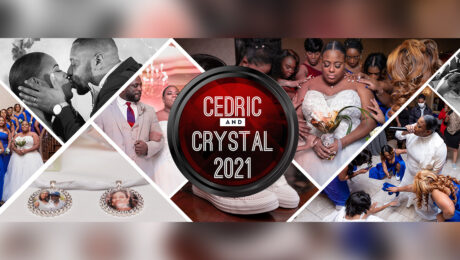Sneak Peek of Cedric & Crystal’s Wedding
- Published in Marketing
Building A Successful Brand
There is no one definition that actually captures the essence of brand building in its entirety. Many people think that brand building is all about communicating and exposing your brand. That is just one side of it. The best way we can define it is that it is a process of creating value to consumers. It encompasses all things that consumers know, feel, and experience about your business in its entirety.
Having defined brand building, let’s take a look at 3 popular types of brands and what they stand for.
- Service brand- this brand is built on knowledge, culture, and experience that one has with the service delivering agency/company/people. Think of Geek Squad or Molly Maid.
- Retail brand- this brand is built on a mixture of products and service experience. Think of Chick-fil-a, Kroger, or KFC
- Product brand- is built on the experience that one has with a specific product. Think of Nike, Ford, or Sony.
Having looked at the 3 popular types of brands, let’s now proceed to look at steps involved in brand building.
1.)Define Your Brand
The first stage in brand building is defining your brand. This is a very critical step as it ultimately determines what your brand truly stands for. When defining your business brand, you should create a checklist of its core strengths. Similarly, if you’re defining a personal brand, you should look at the skills and expertise that you possess especially those which stand out. On the same token, you also need to know what your brand stands for and what is important for your brand (brand values). Your values should in one way or another show that you are contributing to environmental, social, and economic well-being of consumers. You may not realize some of these important aspects of brand building immediately, until you look at them objectively.
2.)Differentiate and Position Your Brand
Before embarking on brand building, you have to take time to differentiate it so that you can attract attention and stand out from competitors. To differentiate your brand, you have to create a unique advantage in the mind of consumers not merely getting attention by brand building colors or logos or other superficial elements. Once you come up with a unique value proposition, you should use a good branding strategy to position your brand in a way that will help consumers see and appreciate the greater value of your brand over competing ones in the market.
3.)Build and Expose Your Brand
As I indicated earlier, brand building is not a one off thing. Building a unique and powerful personal or business brand takes time and consistency. To build your personal brand, you have to keep reinforcing your values and skills by taking up new roles and assignments that will give you more exposure. Alternatively, you can use promotional channels, blogs, forums, and social media (LinkedIn, Twitter and Facebook) to create a voice for your personal or business brand.
When building your brand, you should also endeavor to develop brand personality (what people know, think, and say about you). This is what drives or motivates people to identify with and engage with your brand. The truth is; if you execute your brand building strategies consistently, then you will easily establish a pattern that will forever be associated with your brand name.
4.)Personalize Your Brand
If you want your brand building campaign or brand to be successful, then you have to personalize it. It is important to give your brand an identity. Let consumers see and experience the personality of your brand in its entirety. Look at your brand as something that a consumer wants to identify with pretty much as they would with their favorite cars, cellphones, or computers.
As you engage in brand building, you should also invite customers to be co-creators of brand values so that they can feel that they also own it and relate with it. Top brands encourage consumer-brand interaction by personalizing products to meet the needs and preferences of consumers. When you personalize your brand, you give consumers reason to participate and engage with your brand for a lifetime.
5.)Review Your Brand
Your brand is not static; it will go through a range of motions in its lifetime. Depending on your brand strategies, your brand will either grow in strength, or remain dormant, or recede with time. In the brand cycle, new events, changes, and circumstances bring challenges and opportunities to enhance the value of your brand or re-establish it. All these possibilities should give you the impetus to take charge of your brand building activities.
As your brand name grows, so do the responsibilities and expectations to continue with brand building. The best way of ensuring brand growth is reviewing your activities and evaluating your successes through metrics such as levels of brand awareness and levels of engagements. Regular reviews will help you seize and exploit new opportunities while upholding your commitment to remain true to your vision and brand strategy. It will also help you steer your brand in the right direction and keep it relevant as you move into the future.
As you can see, brand building is not a one off thing. You have to define your brand, differentiate, present it, and review what your brand stands for from time to time. It is very important to be clear about your branding strategies and how you’re going to implement them. You should also adopt brand strategies that will add value to your consumers and help them develop the right impression of your company and what it truly stands for.
- Published in Blog, Marketing, Networking
Why Use Motion Graphics
Why Motion Graphics?
Motion graphics are staging a coup when it comes to communicating the most information possible in just a short time. Content creators and marketers everywhere are embracing the motion graphic as a sort of salve for the ever-shortening attention span of Internet users.
A great deal of video content is created and consumed every day by Internet users – indeed, something like 72 hours of video content is uploaded to YouTube alone every minute. That’s a lot of raw content, but most of us can admit to scrubbing through longer videos to get to the most relevant portions, or quitting altogether if the video goes on a little longer than we’d like.
That’s where motion graphics come in. They condense a great deal of information into a short and visually appealing presentation. They’re a great way to help decrease the risk that a viewer will miss a call to action because they’ve skipped through portions of a longer video.
Here at Kentyla Arts designs, we incorporate motion FX into quite a bit of projects. Simply put, Audiences are engaged more, and for longer periods of time; as opposed to using standard motionless graphics. — Dewwond Mapp
How Are Motion Graphics Created?

Beginning with a static graphics and animating it is easier, as long as you make the right preparations as you create the design. You should create the flat image(s) in vector format if possible, which means that they can be enlarged without any loss in quality. This allows for better control when it comes to animating. For example, when CJ Pony Parts wanted to do some content marketing around the idea of taking a stay-cation, they first had a designer create an infographic on the subject. Since the file was in vector format, it was easy for an animator to take it later and put it in motion.
Starting from scratch will require at least a little bit of forethought and vision. Creating a storyboard, not unlike those used in the creation of feature films, is usually a good idea. You don’t want to have to toss out a bunch of hard work later on if your vision or the needs of your project change along the way. Clarity Way’s recent motion graphic about the effects of bath salts took a lot of work – requiring the collaboration of a researcher, an illustrator, an animator, and a voice-over artist – but it all paid off when The Huffington Post featured it in their Weird News section!
The tools to create motion graphics are readily available, though they may cost a bit. Adobe After Effects and Apple Motion are great choices that make it easy to layer your content and add 3D effects to give the impression of movement. It’s infinitely more appealing to the average viewer than static content.
- Published in Marketing, Networking




